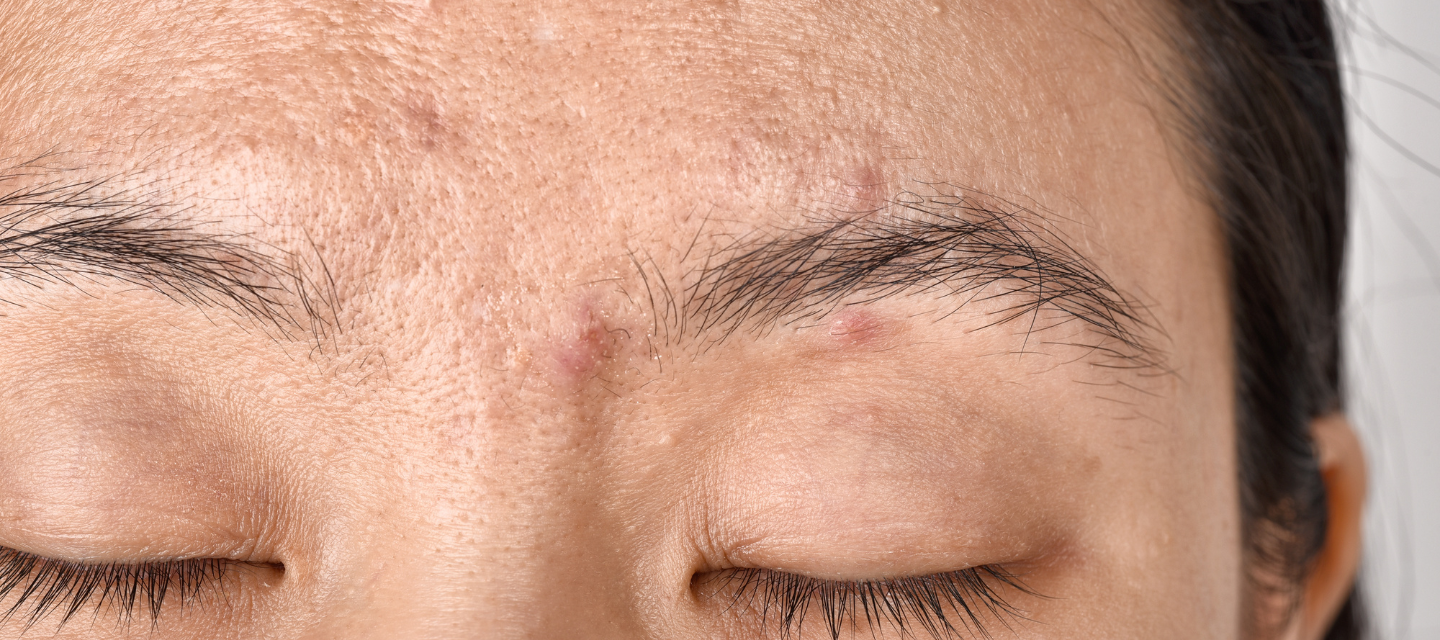
What is WATC?
Your skin tells a story through every change. From breakouts to wrinkles to larger pores. At LuluLab, we use LuluTI (Skin Code) to help you understand these signs with clarity and care. If your AI skin analysis result is WATC, you’re not alone. It’s a common skin type that simply needs the right support for oil balance, breakouts, aging, and pores.
Understanding Your Skin Type: WATC
W = Wrinkles
Why it matters:
Wrinkles can show up earlier or more noticeably when your skin’s renewal process slows down. Something that often happens alongside breakouts and enlarged pores. In WATC skin, these fine lines might be linked to:
→ Slower collagen and elastin production
→ Repeated facial expressions or muscle tension
→ Environmental stressors like sun and pollution
→ Skin that’s feeling dry or tired
What your skin might be telling you…
Those lines are signals, not flaws. They may be pointing to a drop in skin resilience or a loss of firmness from stress, age, or overuse of certain facial muscles. With ingredients that boost collagen and support skin renewal, you can help your skin bounce back and feel more refreshed, firm, and cared for.
A = Acne
Why it matters:
Acne in WATC skin often happens when your skin’s oil production and renewal process falls out of balance. This can lead to clogged pores, breakouts, and lingering bumps especially when combined with early signs of aging. Common triggers include:
→ Hormonal fluctuations (periods, stress, or menopause)
→ Excess sebum and dead skin buildup
→ Skin that’s inflamed or sensitive
→ External irritants like pollution or harsh products
What your skin might be telling you…
Your skin may be overproducing oil to make up for something like dehydration, irritation, or slower cell turnover. That imbalance can lead to both breakouts and rough patches. The good news? With calming, non-stripping ingredients that regulate oil and reduce inflammation, you can support your skin without stressing it out.
T = Texture
Why it matters:
In WATC skin, enlarged pores often appear alongside breakouts and fine lines. This can happen when sebum builds up, skin loses elasticity, or inflammation stretches the pore walls. Key reasons include:
→ Excess oil production
→ Inflammation from acne
→ Aging-related collagen loss
→ Slow cell turnover
What your skin might be telling you…
Your pores may be working overtime. Whether due to oil, acne, or early signs of aging, they’re likely trying to adapt to changes in your skin’s balance. By supporting your skin with ingredients that refine texture, calm inflammation, and help tighten pores, you can create a smoother surface that feels refreshed and more balanced.
C = Clean
Why it matters:
Your skin type means that, even if you’re managing texture changes, breakouts, or fine lines, your skin shows no visible pigmentation. This includes no dark spots, no sun- or age-related discoloration, and an overall even tone. However, this balance can change over time due to:
→ UV exposure and sun damage
→ Past inflammation or injury
→ Hormonal changes
→ Environmental stressors like pollution
What your skin might be telling you…
Your skin has maintained its natural tone despite other challenges. That’s a good sign of balanced melanin production and possibly strong barrier protection. Now’s the time to focus on prevention, like wearing daily SPF and avoiding over-exfoliation, to help keep that clear, even appearance intact as your skin continues to heal and rebalance.
The WATC Connection: How Each Trait Influences the Other
Your skin is full of patterns and possibilities. If you've been identified with a WATC skin type (Wrinkled, Acne-prone, Textured, and Clean), there may be interesting connections between these traits. Common tendencies are also seen in skin with similar characteristics.
Let’s explore what they could mean for you.
LuluTI | What it means | What helps |
|---|---|---|
W–T: Lines and Large Pores | Loss of elasticity and collagen can make pores look bigger, while aging and oil build-up roughen texture. | Gentle retinol, niacinamide, or peptides to boost renewal, firmness, and refine pores over time. |
A–T: Breakouts and Rough Texture | Excess oil, dead skin, and slower renewal can lead to breakouts and uneven texture, while inflammation may enlarge pores and leave pigmentation after healing. | Mild exfoliants like salicylic acid or PHA plus calming agents like centella or green tea. |
WATC skin is a mix of challenges like breakouts, rough texture, and early aging signs, but with a clear skin tone and little pigmentation. Treating just one issue can cause problems, like drying out your skin or triggering new breakouts. Your skin needs a balanced, gentle routine that cares for all its needs at once.

